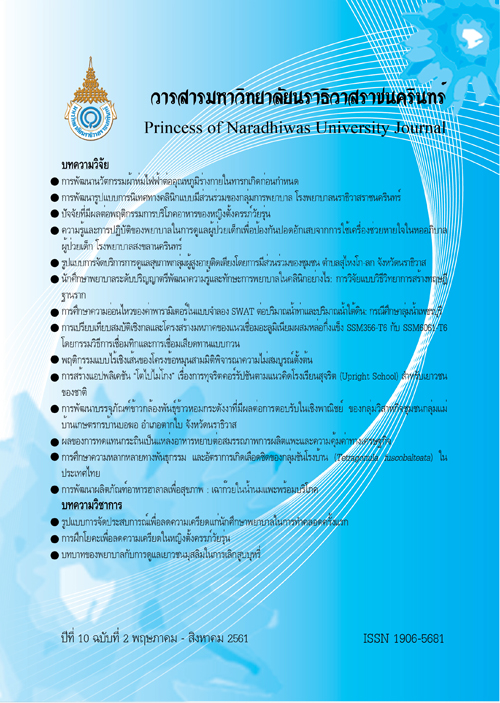The Study of Parameter Sensitivity of SWAT Model for Runoff and Groundwater: A Case Study of Phetchaburi Basin
Keywords:
SWAT, Parameter sensitivity, Runoff, groundwater, Phetchaburi BasinAbstract
Soil and Water Assessment Tool (SWAT) is important for planning and sustainable use of water
resources to meet various demands. Since it is a distributed parameter values model, the user must set parameters
to suit the studied area. The purpose of this research was to investigate the sensitivity of SWAT model parameters
on the runoff and groundwater content. This case study of Phetchaburi Basin used the relative sensitivity index
to determine the sensitivity of parameters. The results of this research showed that the top 4 ranking of parameters sensitivity value index to runoff were: 1) the curve number (Cn2), 2) the available water capacity (Sol_Awc),
3) the soil evaporation compensation factor (Esco), and 4) the saturated hydraulic conductivity (Soil_K). While
the top 5 ranking of parameters sensitivity value index to groundwater were: 1) the available water capacity
of soil (Sol_Awc), 2) the groundwater delay (Gw_Delay), 3) the soil evaporation compensation factor (Esco), 4)
the saturated hydraulic conductivity (Soil_K), and 5) the curve number (Cn2). The results of this study could be
further used for SWAT mode calibration to simulate runoff in Phetchaburi Basin in the future.
References
Baumgartner, A. & Rcichel, E. (1976). Climate and energy exchange in the Gulf of Aqaba (Eilat). Monthly Weather Review, 104(1), 381-358
Khanal, S. & Parajuli, P.B. (2014). Sensitivity Analysis and Evaluation of Forest Biomass Production Potential Using SWAT Model. Journal of Sustainable Bioenergy Systems, 4(1), 136-147.
Lenhart, T., Eckhardt, K., Fohrer, N., & Frede, H.G. (2002). Comparison of Two Different Approaches of Sensitivity Analysis. Physics and Chemistry of the Earth, 27(9), 645-654.
Neitsch, S.L., Arnold, J.G., Kiniry J.R. & Williams, J.R. (2005). Soil and Water Assessment Tool Theoretical
Documentation (Version 2005). Retrieved January 20, 2012, from :http://swatmodel.tamu.edu/
media/1292/SWAT2005theory.pdf
Pongpetch, N. & Pongpetch, S. (2013). Simulation of Stream Flow for Upper Lam Takongsub-Watershed
Using SWAT Model. International Journal of Environmental Science and Development, 4(3), 261-263
Thangtham, N. (2004). Hydrographic soil. Bangkok, Thailand: Kasetsart University.
Suwanlertcharen, T. (2011). Application of the SWAT Model to Evaluate Runoff and Suspended Sediment
from a Small Watershed: A Case Study of Mae Phun Subwatershed, Laplae District, Uttaradit
Province. Master’s thesis. Kasetsart University. (in Thai).
White, K.L. & Chaubey, I. (2005). Sensitivity Analysis, Calibration, and Validations for a Multisite and
Multivariable SWAT Model. Journal of the American Water Resources Association, 5(1), 1077-1089.




